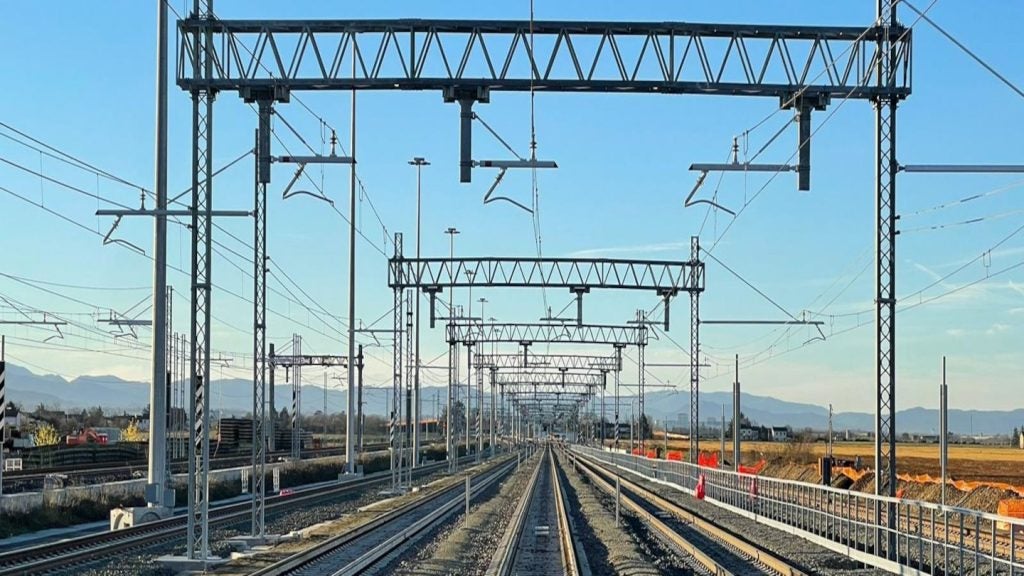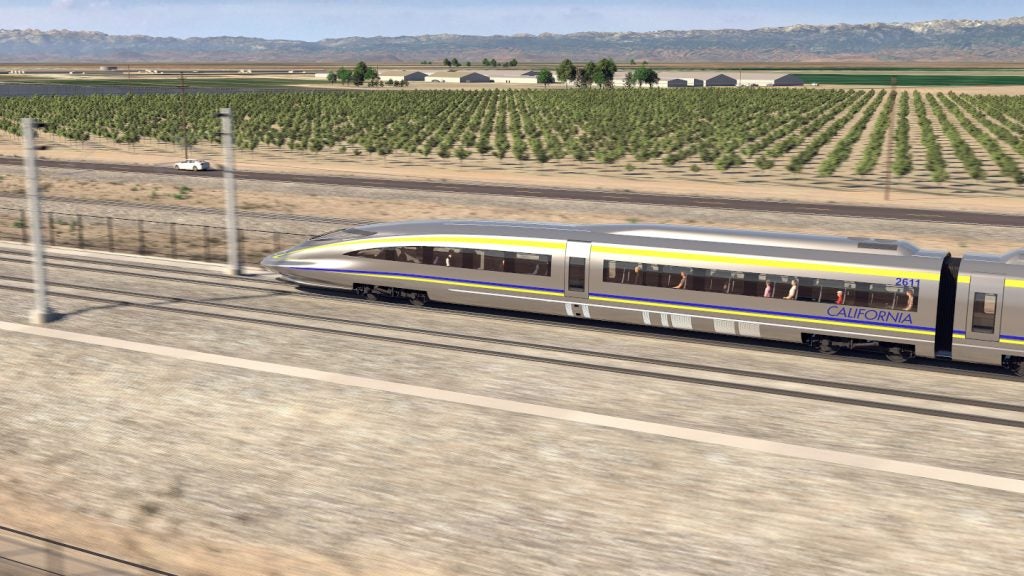The Gateway Program is a rail infrastructure improvement project that will rebuild and replace ageing railway lines along the Northeast Corridor (NEC) between New Jersey and New York City in the US.
Also known as the ‘Gateway Project’, it was first proposed by national rail-road operator Amtrak in February 2011 and applied for federal funding in April 2011. The project is being developed by Gateway Development Commission, which was established jointly by Amtrak and the states of New Jersey and New York.
The first phase of the project includes the construction of a railway tunnel under the Hudson River, also known as the Hudson Tunnel Project. The $16bn tunnel project will improve connectivity between New Jersey and New York City and address the challenges arising out of the ageing infrastructure.
The project secured final regulatory approval in December 2021. Early construction works on the project are expected to commence in 2023 while major construction works are scheduled to commence in 2024.
The new tunnel is expected to be completed in 2025 while the rehabilitation of the North River tunnel is scheduled for completion in 2038.
The project will result in the creation of 72,000 direct and indirect jobs during construction.
Gateway Program project development
The Gateway Program is a replacement of the $8.7bn Access to the Region’s Core (ARC) rail plan to build a rail tunnel connecting New Jersey and Manhattan. The project had broken ground in June 2009 but was scrapped a year later due to unexpected potential costs involved in the construction of the tunnels.
Approximately $600m was already invested in the project at the time of cancellation. The Gateway Program includes some of the already planned improvements of the ARC project such as a tunnel under the Hudson River and the expansion of the New York Penn station. Some of the projects, which began under the ARC project, also form part of the Gateway Program.
Some of the works that were underway at the time of cancellation included the construction of a track subway in North Bergen, the development of a tunnel section under the Hudson River, and the expansion of Portal Bridge over the Hackensack River in New Jersey.
Gateway Program project phases
The Gateway Program’s first phase includes the construction of a new two-track tunnel under the Hudson River, and the rehabilitation of the existing two-track North River Tunnel, which was severely damaged during the 2012 Superstorm Sandy.
Phase one will also include the construction of a concrete casing on the West Side of Manhattan in Hudson Yards in order to preserve the right-of-way for the future tunnel to Penn Station in Manhattan. The Portal North Bridge in New Jersey will also be replaced under the programme.
The future phases of the Gateway Program will replace and expand the Sawtooth Bridges on the NEC and expand the Penn Station in Manhattan. The Portal South Bridge will also be constructed, along with the Bergen/Secaucus Loop in New Jersey, and the Secaucus Junction Station will be expanded.
A rail yard and support infrastructure will also be constructed in New Jersey for NJ Transit.
Hudson Tunnel Project details
The existing North River Tunnel under the Hudson River includes two tubes, with one track each. It is the only passenger rail link connecting Manhattan and New Jersey. Approximately 200,000 passengers ride an Amtrak or NJ Transit train every day, through the tunnel built 110 years ago.
The tunnel is operating at a full capacity of 24 trains per hour, leading to delays and disruptions caused due to ageing infrastructure such as electrical power, and signal and track systems. Furthermore, the tunnel was severely damaged by Superstorm Sandy in 2012 as millions of gallons of salt water flooded into the tunnel.
The North River Tunnel continues to require regular maintenance, which leads to disruptions in rail services. The Hudson Tunnel project was proposed to address these challenges.
The project comprises three main components including the construction of a new two-track Hudson River Tunnel, the construction of the Hudson Yards concrete casing in New York, and the rehabilitation of the North River Tunnel.
In addition, the project will create a new surface alignment from Secaucus to the new tunnel portal in North Bergen. It will also construct ventilation shafts and fan plants in New Jersey and New York and upgrade the tracks near Penn Station.
Construction details
Early construction work on the Portal North Bridge commenced in October 2017 and was completed in February 2019.
Geotechnical explorations on the Hudson River, as part of the engineering and design work, commenced in October 2019.
Early construction work on the final section of the Hudson Yards concrete casing commenced in March 2021.
Geotechnical investigations on the western side of Manhattan began in November 2021.
The geotechnical investigations required to enter the next phase of engineering phase were completed in February 2022.
Funding
The US government announced funding of $292m for constructing section three of the Hudson Yards concrete casing in January 2023. The funding is part of a $649m early phase project for completing the final section of the concrete casing.
The project qualified for the US Department of Transportation (USDOT) New Starts grant programme in 2016.
Amtrak committed to contributing $50m towards the project’s preliminary engineering and design work.
Full funding for the environmental planning work and preliminary engineering of the Hudson Tunnel Project is provided by Amtrak, the Port Authority, and NJ Transit, totalling $86.5m.
The Port Authority of New York and New Jersey agreed to provide funding of $12.5m towards relocating utilities for constructing the final section of the concrete casing at Hudson Yards.
The early works on the Portal North Bridge were funded through a $16m TIGER grant, awarded to NJ Transit, and $4m provided by New Jersey’s Transportation Trust Fund (TTF).
Contractors involved
Amtrak contracted Arup, an engineering and architecture firm, to design the new tracks, platforms, and concourses of the New York Penn Station in June 2022.
The main contract for Portal Bridge capacity enhancement was awarded to a joint venture led by AECOM Technology, an infrastructure consulting firm, in May 2010, with a contract value of $18m.
AKRF, an environmental, planning and engineering consulting firm, prepared the National Environmental Policy Act (NEPA) and Environmental Impact Statement (EIS) for the Portal Bridge capacity enhancement project on behalf of Amtrak and NJ Transit.
Urban Engineers, a planning, design, and construction support services consulting firm, was also a key member of the construction management team.
Operation analysis, geo-technical evaluation, and re-alignment of the three-mile-long Portal Bridge track were undertaken by Portal Partners, a tri-venture of architecture, engineering, and construction firm Ganett Fleming; Jacobs, a technical professional services firm; and HNTB, an infrastructure design firm.
Engineering, design, and documentation preparation was done by MP Engineers + Architects, a consulting firm, on behalf of Portal Partners.
PACO Technologies, a programme management consulting firm, provided sub-consultation services to Portal Partners.
Other contractors include Gall Zeidler Consultants, an engineering consultancy, who provided Program Management Support Services (PMSS) as a part of the Hill International led contract for Amtrak.
Project benefits
The Hudson Tunnel project will provide long-term reliability and redundancy to the NEC corridor between New Jersey and New York. Upon completion of the project, four tracks will be available between New Jersey and New York, allowing flexibility in Amtrak and NJ Transit rail operations to maintain and expand current capacity levels.
The project will also encourage people to use train services by making train travel more attractive and reliable, thereby avoiding greenhouse gas emissions from vehicles. It is estimated that without the project, two million additional tonnes of carbon will be released into the atmosphere.











